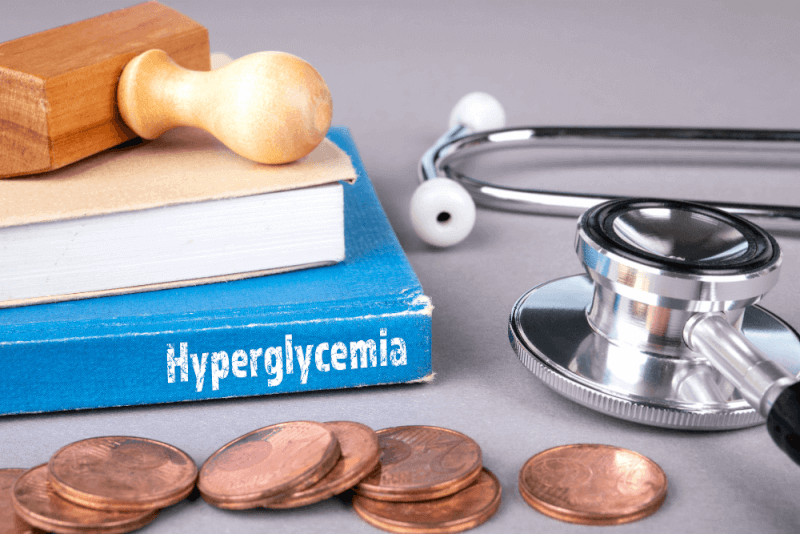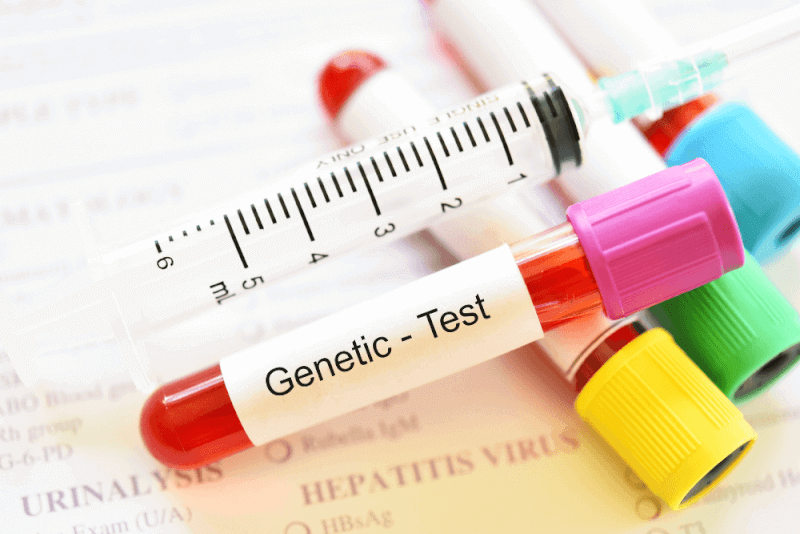30-Second Summary
- Currently, there is no treatment available that can completely cure MPS. Medical care is aimed at managing symptoms and reducing their severity.
- Once the upper and lower parts of the stomach are secured, the cutting and removal procedures are performed. The surgery is completed without disrupting the continuity of regular digestion in the digestive system.
- Dietary changes in MPS patients do not have a preventive effect on the progression of the disease. However, limiting milk, sugar, and dairy products may help those who suffer from excessive mucus problems.
- Mucopolysaccharidosis, also known as MPS, has many different types with various physical and neurological symptoms.
What is Mucopolysaccharidosis (MPS)?
Mucopolysaccharidosis, one of the rare inherited diseases, is also known as MPS and refers to a group of disorders. Therefore, there are many different types with various physical and neurological symptoms.
Glycosaminoglycans, also known as mucopolysaccharides, are long chains of sugar molecules found in cells. They play a role in the formation of bones, cartilage, tendons, the cornea, skin, and connective tissues. Glycosaminoglycans are also found in the fluid that lubricates joints.
These substances are normally broken down and recycled by 11 different enzymes inside the cells. MPS is a condition that occurs when the enzymes needed to break down glycosaminoglycans are missing or do not function properly. When these molecules are not properly broken down, they accumulate over time in the brain, blood, spinal cord, and connective tissues.
This accumulation affects a person’s appearance, physical abilities, organ and system functions, and in many cases, cognitive abilities. It also causes progressive cellular damage. The symptoms vary depending on the type of MPS.
MPS is part of a larger group of disorders called lysosomal storage diseases. The primary function of lysosomes is to break down and recycle waste materials. In lysosomal disorders, the enzymes that normally break down complex molecules into smaller pieces are either missing or do not function correctly. As a result, these molecules accumulate in the body’s cells or tissues.
Types of Mucopolysaccharidosis (MPS)
MPS is a disorder with 7 different clinical types and many subtypes. Although each type of MPS is different, in most patients, a period of normal development is followed by a decline in physical or mental functioning. Some types can lead to death within the first few months of life.
MPS Type I (Hurler, Hurler-Scheie, and Scheie Syndromes)
Historically, it has been divided into three subgroups known as Hurler syndrome, Hurler-Scheie syndrome, and Scheie syndrome. These syndromes are categorized along a continuum based on the severity of symptoms. Individuals with more severe symptoms are at one end of the spectrum (Hurler syndrome), while those with milder symptoms are at the other end (Scheie syndrome). Those in between are classified as Hurler-Scheie syndrome.
Hurler syndrome presents the most severe symptoms, while Scheie syndrome is the mildest. Scheie syndrome was previously classified as MPS 5 before being included under the definition of MPS 1.
In MPS 1 patients, the enzyme alpha-L-iduronidase, which is necessary to break down the glycosaminoglycans dermatan sulfate and heparan sulfate, is either deficient or absent.
In infants with Hurler syndrome, developmental delays become apparent toward the end of the first year. In children, development usually stops between ages 2 and 4, followed by progressive cognitive and physical decline. Hearing loss can limit verbal language development. Physical symptoms include:
- Short stature
- Multiple skeletal abnormalities
- Coarse facial features
- Enlarged organs
Some children may experience feeding difficulties. Children with severe MPS 1 often die before the age of 10 due to obstructive airway disease, respiratory infections, and heart complications.
Children with less severe MPS 1 may have average intelligence or mild to moderate intellectual disability or learning difficulties. Some may experience psychological issues. During adolescence, respiratory problems, sleep apnea, and heart disease may occur.
MPS Type II (Hunter Syndrome)
Also known as Hunter syndrome, MPS II is caused by a deficiency of the enzyme iduronate-2-sulfatase.
MPS II is the only type of MPS in which inheriting a single defective gene from the mother can cause the condition in a male child. Therefore, the disease almost exclusively affects boys (known as X-linked recessive inheritance). However, rare cases have been reported where girls are also affected.
Children with the severe form of MPS II display physical and neurological characteristics similar to severe MPS I, though typically milder. Symptoms usually begin between ages 2 and 4. Developmental regression typically begins between 18 and 36 months. After this phase of dominant developmental decline, progressive loss of skills occurs. Other symptoms may include:
- Increased intracranial pressure
- Joint stiffness
- Vision impairment
- Progressive hearing loss
- Pebbly skin texture with white or flesh-colored nodules on the upper arms, back, and upper legs
- Due to upper respiratory disease or heart failure, life expectancy is generally up to age 15
In children with the milder form of MPS II, diagnosis often occurs during the second decade of life. These children generally do not experience intellectual or social developmental delays. Physical symptoms are less prominent, and the disease progresses more slowly. Therefore, skeletal issues may be less common. Individuals with milder symptoms may live up to 50 years. However, respiratory and heart complications can lead to early death.
MPS Type III (Sanfilippo Syndrome)
Also known as Sanfilippo syndrome, MPS III has four distinct types: A, B, C, and D. Each type is caused by changes in the enzymes required to break down heparan sulfate. There are very few clinical differences between the four types, but symptoms are severe and progress rapidly, especially in children with Type A.
Symptoms that MPS III may cause include:
- Aggressiveness
- Hyperactivity
- Sleep disorders
- Progressive cognitive changes
- Memory loss
- Intellectual disability
- Hearing loss
- Vision loss
MPS III can affect children differently, and the disease may progress quickly in some. Children with MPS III may experience seizures, difficulty walking, and varying degrees of early developmental delays in cognitive and motor skills.
Children with MPS III typically show significant learning decline between the ages of 2 and 6. This is followed by loss of language skills and partial or complete hearing loss. These children tend to first lose the words they have already learned.
Next, they begin to have movement problems. Some children may never learn to speak. As the disease progresses, children become increasingly unsteady on their feet. Most patients lose the ability to walk by age 10.
Life expectancy with MPS III is highly variable. Most individuals live into adolescence, and some may survive into their 20s or even 30s.
MPS Type IV (Morquio Syndrome)
Also known as Morquio syndrome, MPS IV has two subtypes caused by deficiencies or insufficient activity of the enzymes N-acetylgalactosamine-6-sulfatase (Type A) or beta-galactosidase (Type B), which are needed to break down the mucopolysaccharides chondroitin-6-sulfate and keratan sulfate.
The clinical features are similar in both types, but symptoms tend to be milder in Type B. Symptoms include:
- Skeletal dysplasia (abnormal growth of bones and cartilage)
- Hearing loss
- Vision problems (due to corneal clouding)
- Malformed bones at the junction between the head and neck
- Protruding chest bone
- Curved spine
- Knock knees
Additionally, people with MPS IV are highly likely to develop nerve compression due to excessive and progressive skeletal changes. Respiratory limitations and heart disease are also commonly observed. Intelligence is typically unaffected in this type.
Onset of MPS IV generally occurs between the ages of 1 and 3. Children with MPS IV experience slowed physical growth, and development usually halts around age 8. In severe forms of MPS IV, life expectancy may extend into the 30s.
MPS Type VI (Maroteaux-Lamy Syndrome)
Caused by a deficiency of the enzyme N-acetylgalactosamine-6-sulfatase, MPS VI is also known as Maroteaux-Lamy syndrome. In some individuals, symptoms may appear mildly, while in others, they may be more severe.
The physical symptoms observed in individuals with MPS I are also present in this type. Thickening of the membrane that surrounds and protects the brain and spinal cord, hearing and vision problems, enlargement of the liver and/or spleen, heart disease, and respiratory symptoms may occur. Intellectual development is usually not affected in this type.
Individuals with MPS VI initially experience normal growth. However, growth stops around the age of 8. Skeletal abnormalities worsen over time, limiting mobility. Symptoms usually begin in early childhood. Although life expectancy varies depending on the severity of the disease, it generally ranges between 23 and 30 years.
MPS Type VII (Sly Syndrome)
Also known as Sly syndrome, MPS VII is one of the rarest types of MPS. It is caused by a deficiency of the enzyme beta-D-glucuronidase, leading to the accumulation of three glycosaminoglycans: dermatan sulfate, heparan sulfate, and chondroitin sulfate.
Children with MPS VII may experience mild to moderate intellectual disability, hydrocephalus, heart disease, vision loss, and issues like carpal tunnel syndrome. In addition to skeletal problems such as joint stiffness and short stature that can limit movement, some children may also suffer from recurrent pneumonia in early life.
Most children with MPS VII live into adolescence or young adulthood. However, in rare cases, newborns with MPS VII may experience abnormal fluid accumulation in the body. In such cases, survival is typically only a few months or less.
MPS Type IX
Also known as Natowicz syndrome, MPS IX is extremely rare and results from a deficiency of the enzyme hyaluronidase. In this type, joint mobility and intelligence are not affected. Symptoms include painful swelling and flare-ups of soft tissue masses and nodules around the joints. Other symptoms may include mild facial changes, short stature, ear infections, and some degree of bone erosion.
Causes of Mucopolysaccharidosis (MPS)
MPS is an inherited disease. Therefore, it is passed from parents to children. If both parents carry one non-working copy of the gene related to the condition, there is a 25% chance that their child will be affected by the disease.
Due to the genetic defect in people with MPS, the long sugar chains called glycosaminoglycans are not properly broken down. These molecules are especially found in mucus and in the fluid surrounding joints. When the molecules cannot be adequately broken down, they accumulate in tissues and organs. The symptoms and problems experienced by patients arise due to this accumulation.
Symptoms of Mucopolysaccharidosis (MPS)
Due to the presence of different types of MPS, symptoms may vary among patients. The severity of symptoms also ranges widely. Some symptoms may be apparent at birth, while others emerge over time as glycosaminoglycans accumulate and affect the bones, skeletal structure, connective tissues, and organs.
The age of onset also varies significantly, but the first signs typically appear in childhood.
Physical symptoms may include:
- Flat nasal bridge
- Thick lips
- Enlarged tongue and lips
- Disproportionately short trunk
- Dwarfism
- Abnormally shaped or sized bones
- Other skeletal irregularities
- Thickened skin
- Hernia
- Enlargement of organs such as the liver and spleen
- Limited hand mobility and function due to carpal tunnel syndrome
- Recurrent respiratory tract infections
- Obstructive airway disease
- Obstructive sleep apnea
- Heart disease (often affecting the heart valves)
- Abnormal spinal bones
- Inability to fully extend fingers
- Joint disease
Neurological symptoms of MPS may include neuron damage, pain, and movement difficulties. Affected individuals may have average intelligence or profound intellectual disability. Developmental delays or serious behavioral disorders may also occur. Common symptoms include:
- Hyperactivity
- Depression
- Speech disorder
- Hearing loss
- Vision impairment
Fluid buildup in the brain can increase pressure, damage brain tissue, and lead to severe headaches. Hydrocephalus can also slow development and cause delays. In some MPS types, hydrocephalus is common. If deposits occur in the eyes, corneal thickening and increased intraocular pressure may develop.
Diagnostic Criteria for Mucopolysaccharidosis (MPS)
Early diagnosis of MPS is critically important. It can help prevent some of the complications caused by the disease. Specific tests are used during clinical examination to detect excessive mucopolysaccharides in the urine. This is the first step in diagnosing MPS.
In some countries or healthcare institutions, MPS I testing is included in routine newborn screening. If the screening result is positive, enzyme testing must be conducted to confirm the diagnosis.
Prenatal diagnosis using amniocentesis and chorionic villus sampling can help determine whether a fetus has the disorder.
Genetic counseling helps parents with a family history of MPS determine whether they are carriers of the gene responsible for the condition. Such genetic testing is optional and based on personal choice.
Treatment Methods for Mucopolysaccharidosis (MPS)
Currently, there is no treatment available that can completely cure MPS. Medical care focuses on managing symptoms and reducing their severity, aiming to improve the quality of life for individuals with the condition.
Enzyme Replacement Therapy for MPS
Enzyme replacement therapy (ERT) involves long-term treatment that delivers the missing enzymes to the body through intravenous infusion. ERT is currently available for MPS I, MPS IVA, MPS VI, and MPS VII. Testing for its use in other types of MPS is ongoing.
Although ERT does not cure the disease, it helps alleviate non-neurological symptoms and pain. Because the enzymes used in ERT cannot cross the blood–brain barrier, it does not improve symptoms related to vision or the nervous system.
Stem Cell Therapy for MPS
Bone marrow transplantation and umbilical cord blood transplantation have shown limited success in treating MPS. If selected, these treatments should be performed early in life and ideally before symptoms appear. They may help improve many physical symptoms, excluding those related to the skeleton and eyes.
However, their impact on neurological symptoms varies. These are high-risk procedures and require thorough counseling of family members before making treatment decisions.
Surgery for MPS
Surgical procedures are performed to relieve compressed nerves and nerve roots caused by skeletal or other abnormalities. Corneal transplantation is recommended for individuals with significant vision problems.
To address respiratory issues, procedures such as adenoid and tonsil removal or endotracheal tube placement may be applied.
What Diseases Can Mucopolysaccharidosis (MPS) Cause?
Patients with MPS may experience various complications. Respiratory complications include:
- Central apnea due to spinal cord compression
- Airway obstruction
- Sinopulmonary infections
- Lung function disorders
Cardiac complications include:
- Valve disease
- Vascular disease
- Pulmonary hypertension
- Myocardial infarction and stroke
Skeletal and connective tissue complications include:
- Dysostosis multiplex
- Odontoid hypoplasia
- Subluxation and kyphoscoliosis
- Short stature
- Joint stiffness
- Degenerative disease
- Ligament laxity
- Hernia
Neurological complications include:
- Developmental delay
- Neurological regression
- Abnormal behavior
- Seizures
- Sleep disorder
- Hydrocephalus
- Cervical spinal cord compression
- Pachymeningitis cervicalis
- C1–C2 subluxation
- Carpal tunnel syndrome
- Diarrhea







